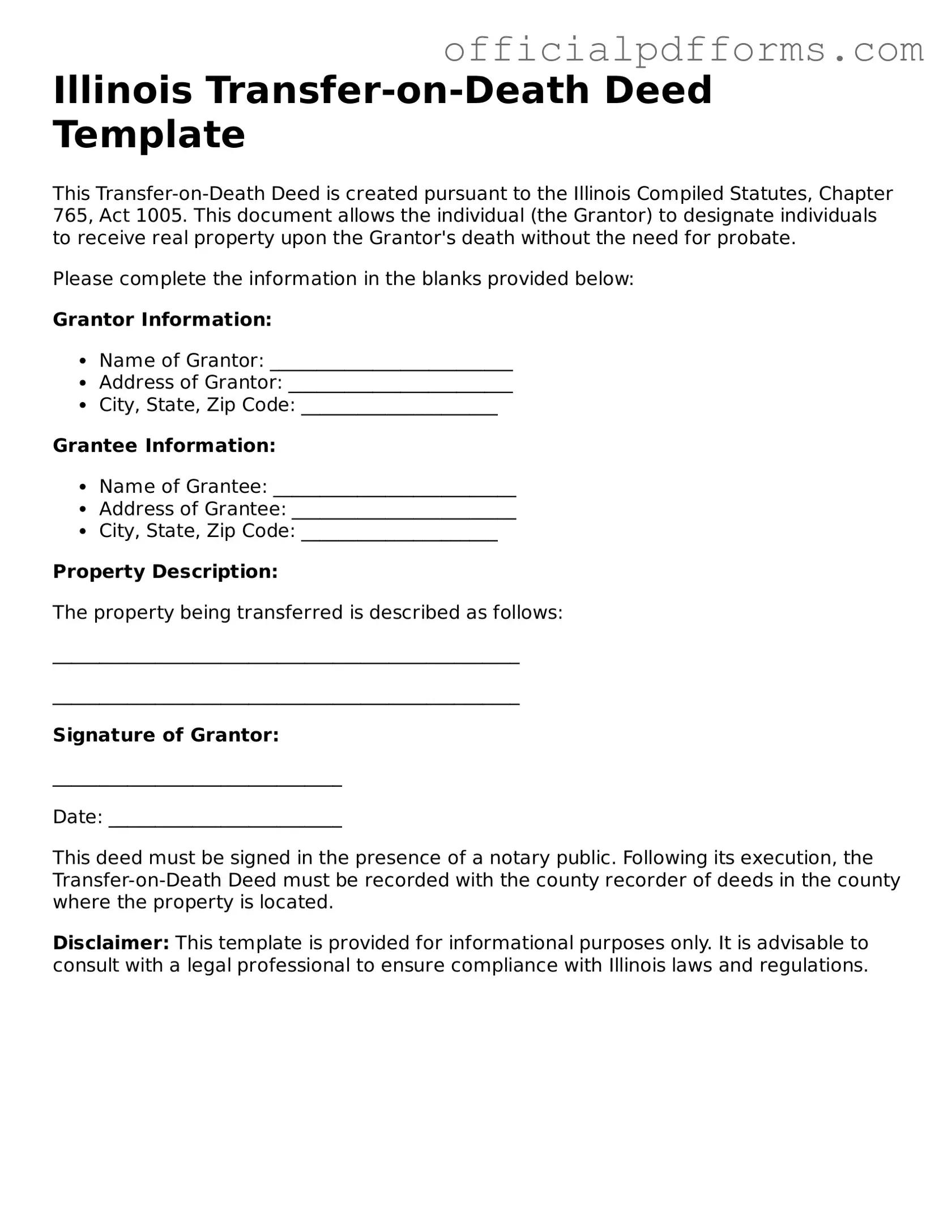Printable Illinois Transfer-on-Death Deed Template
The Illinois Transfer-on-Death Deed form allows property owners to transfer real estate to designated beneficiaries upon their death, bypassing the probate process. This legal tool can simplify estate planning and ensure that assets are distributed according to the owner's wishes. It is crucial for individuals considering this option to understand its implications and complete the form accurately.
To fill out the form, click the button below.
Access Form Online
